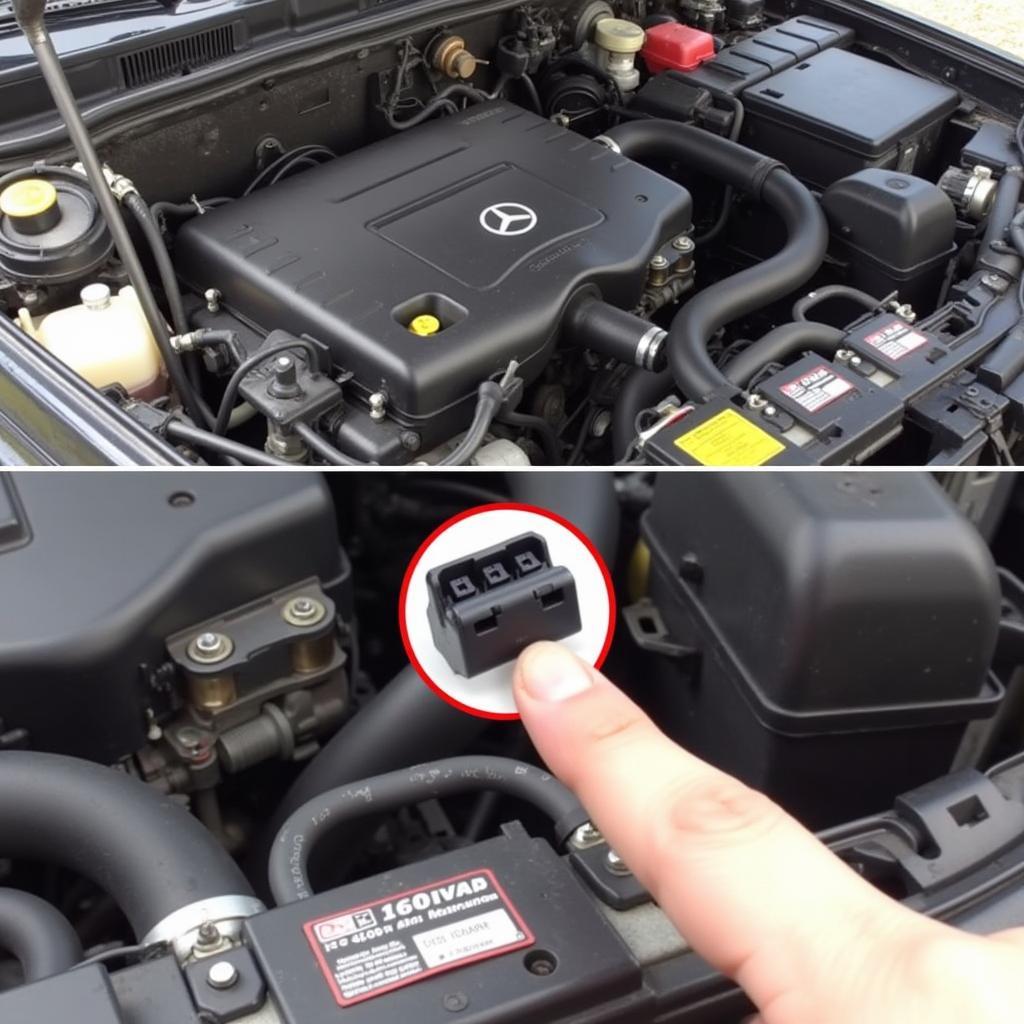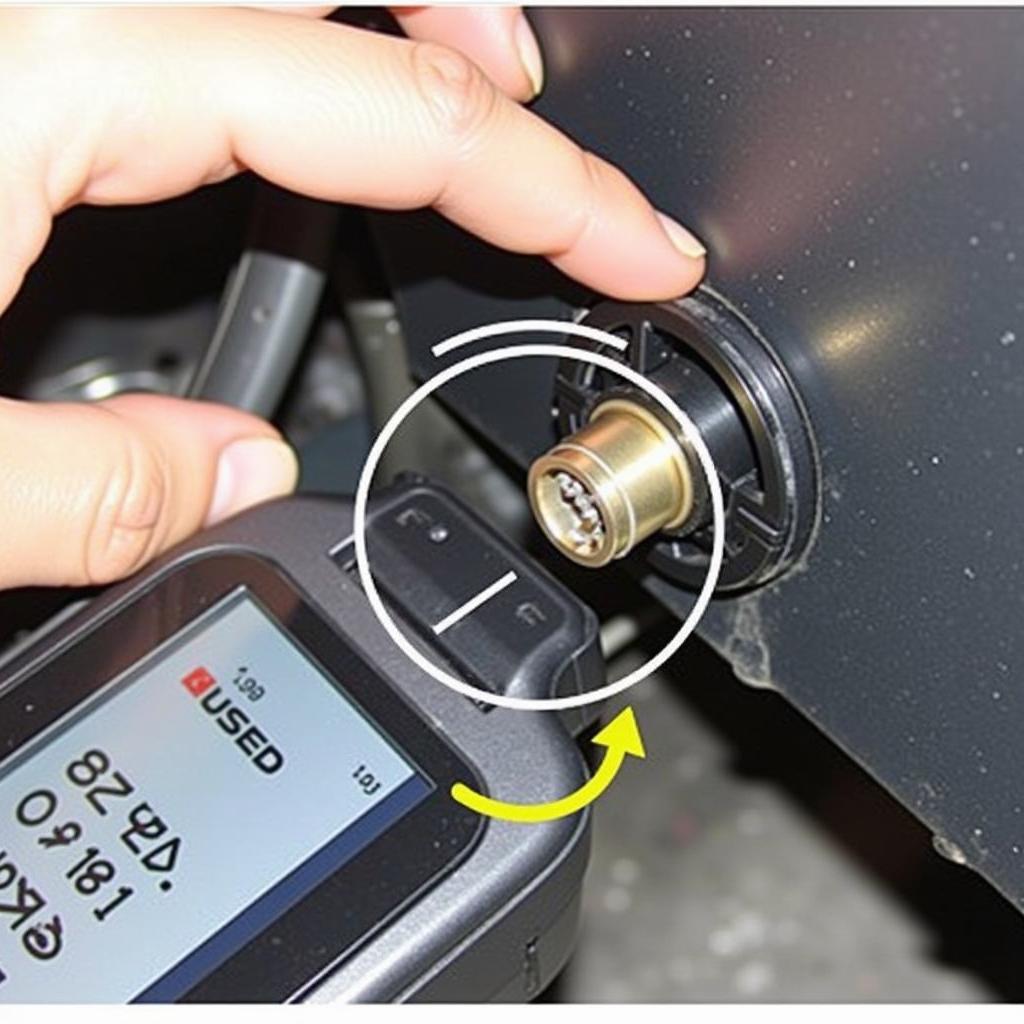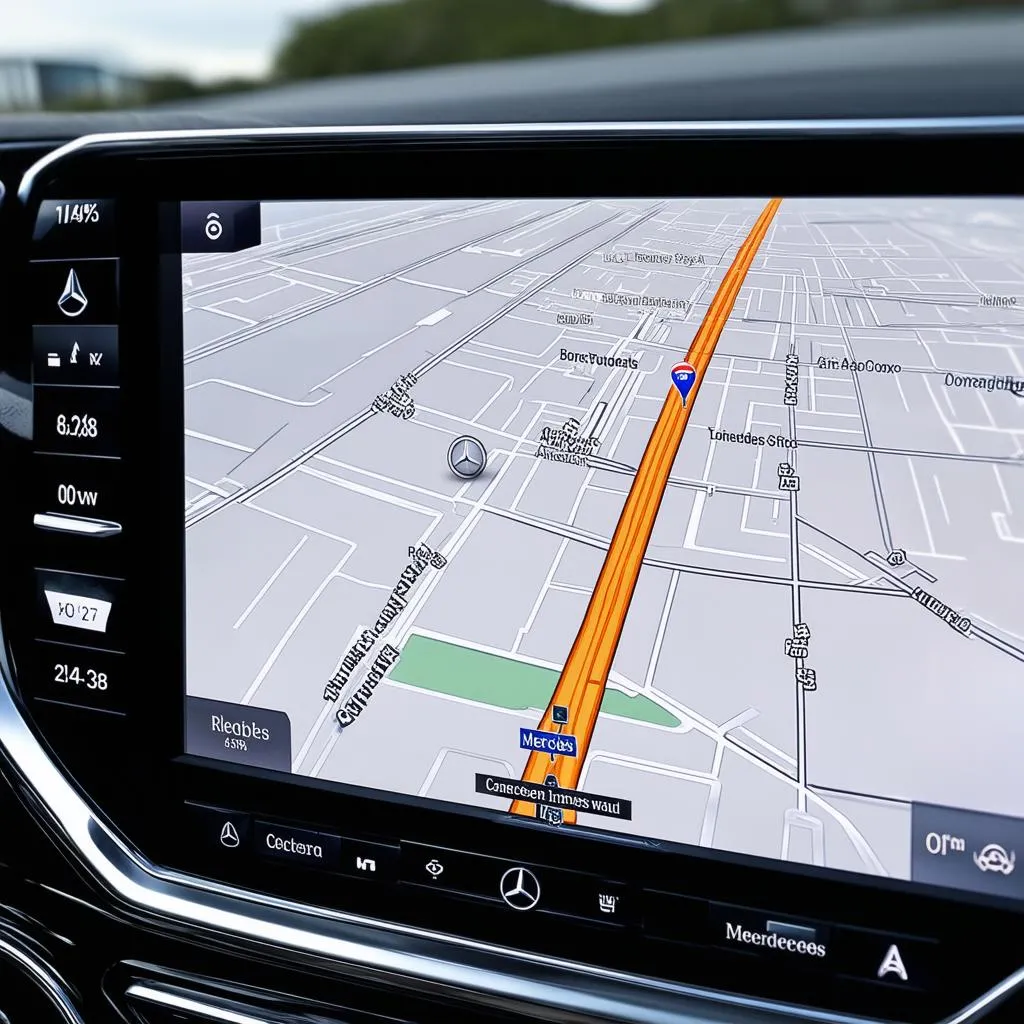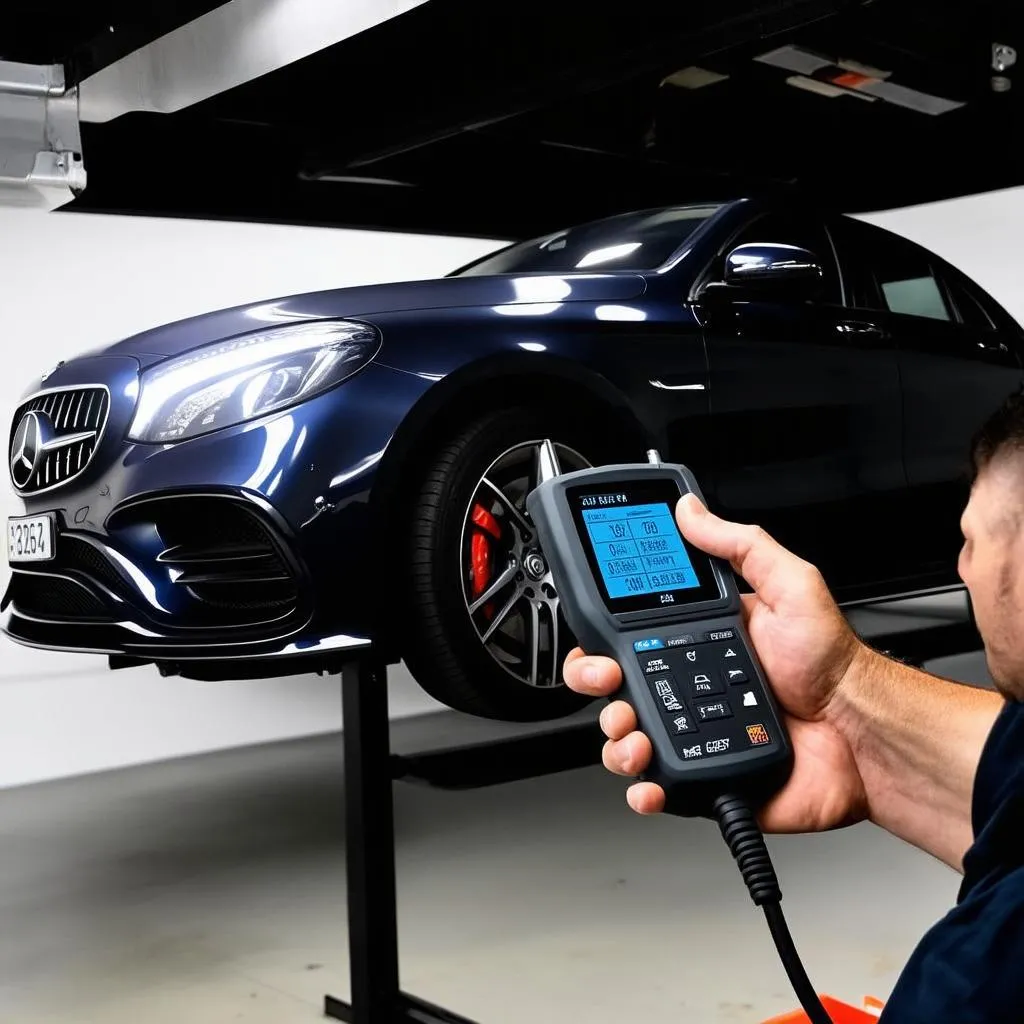Running a diagnostic on a 1991 Mercedes 190E can seem daunting if you’re not familiar with the process. However, understanding how to diagnose your classic Mercedes is essential for maintaining its performance and identifying potential issues. This comprehensive guide will walk you through various methods, from DIY techniques to professional-grade diagnostic tools, allowing you to troubleshoot your 1991 190E effectively. We’ll cover everything from checking basic components to utilizing more advanced techniques for a precise diagnosis.
Understanding Your 1991 Mercedes 190E’s Diagnostic System
Before diving into the “how,” let’s talk about the “what.” The 1991 190E utilizes a relatively simple diagnostic system compared to modern cars. It doesn’t have the sophisticated OBD-II port you find in newer vehicles. Instead, it relies on a combination of warning lights, physical checks, and a diagnostic socket located under the hood. Understanding these components is the first step to a successful diagnosis.
Checking Warning Lights
Your 1991 190E uses warning lights on the dashboard to signal potential problems. These lights can indicate anything from low oil pressure to a malfunctioning ABS system. Consult your owner’s manual to understand the meaning of each warning light.
Performing Physical Inspections
Often, a simple physical inspection can reveal the source of a problem. Check for loose connections, damaged wires, or leaks. Inspecting the condition of fluids, belts, and hoses can also offer valuable clues.
Utilizing the Diagnostic Socket
The diagnostic socket, often located near the fuse box under the hood, provides access to the car’s electronic control units (ECUs). You can use a specific diagnostic tool, often referred to as a “code reader,” to retrieve diagnostic trouble codes (DTCs) stored in the ECUs.
 Locating the diagnostic socket on a 1991 Mercedes 190E
Locating the diagnostic socket on a 1991 Mercedes 190E
How Do I Run Diagnostic on Mercedes 1991 190E: Step-by-Step Guide
Here’s a step-by-step guide to running a diagnostic on your 1991 Mercedes 190E.
- Locate the diagnostic socket. Refer to your owner’s manual for the exact location.
- Connect a compatible diagnostic tool. Make sure the tool is designed for older Mercedes models.
- Turn the ignition key to the “on” position. Don’t start the engine.
- Follow the instructions provided with your diagnostic tool. Each tool will have a specific procedure for retrieving DTCs.
- Interpret the DTCs. Use a reliable source, such as a repair manual or online database, to understand the meaning of the codes.
Choosing the Right Diagnostic Tool for a 1991 Mercedes 190E
Selecting the appropriate diagnostic tool is crucial for accurate results. While some basic code readers are available, investing in a more advanced tool designed specifically for older Mercedes models is recommended. These tools can provide more detailed information and access more systems.
DIY vs. Professional Diagnostics
While you can perform some basic diagnostics yourself, more complex issues may require the expertise of a qualified mechanic. They have access to specialized equipment and the knowledge to interpret complex DTCs and perform necessary repairs.
 Connecting a diagnostic tool to a 1991 Mercedes 190E
Connecting a diagnostic tool to a 1991 Mercedes 190E
Common Diagnostic Trouble Codes (DTCs) on a 1991 Mercedes 190E
Some common DTCs you might encounter on a 1991 Mercedes 190E include those related to the fuel injection system, ignition system, and ABS. Understanding these codes can help you pinpoint the problem area.
“Understanding the context of the DTCs is crucial. A single code can have multiple potential causes, so further investigation is often needed,” says Michael Schmidt, a veteran Mercedes technician with over 25 years of experience.
Beyond the Basics: Advanced Diagnostic Techniques
For more complex issues, advanced diagnostic techniques may be necessary. These include analyzing sensor data, monitoring live data streams, and using specialized diagnostic software. These methods are typically performed by professional mechanics.
 Professional diagnostic scan on a 1991 Mercedes 190E
Professional diagnostic scan on a 1991 Mercedes 190E
Conclusion
Running a diagnostic on your 1991 Mercedes 190E doesn’t have to be intimidating. By understanding the system and following the steps outlined in this guide, you can gain valuable insights into your vehicle’s health. Remember, however, that complex issues often require the expertise of a professional.
FAQ
- Can I use any OBD-II scanner on my 1991 Mercedes 190E? No, a specialized tool for older Mercedes models is required.
- Where can I find the meaning of DTCs? Repair manuals and online databases are helpful resources.
- What should I do if I can’t find the diagnostic socket? Consult your owner’s manual or a qualified mechanic.
- Is it necessary to disconnect the battery before running diagnostics? Not usually, but consult your diagnostic tool’s instructions.
- Can I fix all problems identified by the diagnostic tool myself? Basic issues can be addressed DIY, but complex problems may require professional assistance.
- How often should I run diagnostics on my 1991 Mercedes 190E? Regularly, or when you suspect a problem.
- What if my 1991 Mercedes 190E doesn’t have a diagnostic socket? Early models may require different diagnostic methods. Consult a specialist.
You might also be interested in these articles on our website: “Maintaining Your Classic Mercedes” and “Troubleshooting Common Mercedes Issues.”
Need help? Contact us via WhatsApp: +1 (641) 206-8880, Email: CARDIAGTECH[email protected] or visit us at 276 Reock St, City of Orange, NJ 07050, United States. Our customer support team is available 24/7.


